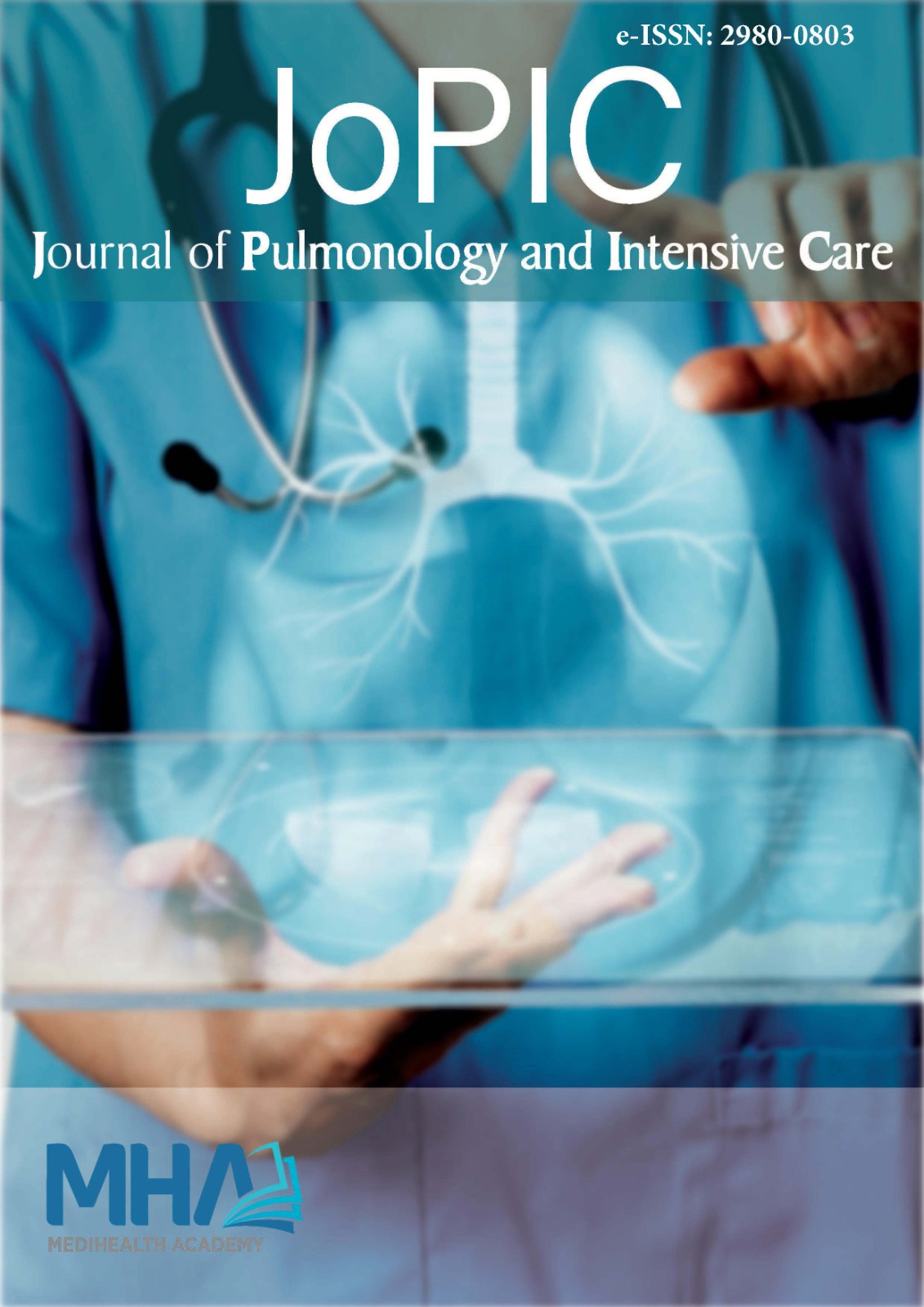1. The Johns Hopkins Center for Health Security (JHCHS) | Homepage [Internet]. [cited 2020 May 10]. https://www. centerforhealthsecurity.org/
2. Demirbilek Y, Pehlivantürk G, Özgüler ZÖ, Meşe EA. COVID-19 outbreak control, example of ministry of health of Turkey. Turk J Med Sci. 2020;50(SI-1):489-494. doi:10.3906/sag-2004-187
3. Burki T. China’s successful control of COVID-19. Lancet Infec Dis. 2020; 20(11):1240-1241. doi:10.1016/S1473-3099(20)30800-8
4. McCombs A, Kadelka C. A model-based evaluation of the efficacy of COVID-19 social distancing, testing and hospital triage policies. PLoS Comput Biol. 2020;16(10):e1008388.doi:10.1371/journal.pcbi.1008388
5. Tan W, Zhao X, Ma X, et al. A novel coronavirus genome identified in a cluster of pneumonia cases- Wuhan, China 2019 2020. China CDC Wkly. 2020;2(4):61-62. doi:10.46234/ccdcw2020.017
6. Wynants L, Calster BV, Collins GS, et al. Prediction models for diagnosis and prognosis of COVID-19: systematic review and critical appraisal.<strong> </strong>BMJ. 2020;369:m1328.doi:10.1136/bmj.m1328
7. Wellcome Trust. Sharing research data and findings relevant to the novel coronavirus (COVID-19) outbreak 2020.https://wellcome.ac.uk/press-release/sharing-research-data-and-findings-relevant-novel-coronavirus-covid-19-outbreak
8. Wu D, Wu T, Liu Q, Yang Z. The SARS-CoV-2 outbreak: what we know. Int J Infect Dis. 2020;94:44-48. doi:10.1016/j.ijid.2020.03.004
9. Li LQ, Huang T, Wang YQ, et al. 2019 novel coronavirus patients’ clinical characteristics, discharge rate and fatality rate of meta-analysis. J Med Virol. 2020;92(6):577-583. doi:10.1002/jmv.25757
10. Sun P, Lu X, Xu C, Sun W, Pan B. Understanding of COVID-19 based on current evidence. J Med Virol. 2020;92(6):548-551. doi:10.1002/jmv.25722
11. Tang X, Du R, Wang R, et al. Comparison of hospitalized patients with ARDS saused by COVID-19 and H1N1. Chest. 2020;158(1):195-205. doi: 10.1016/j.chest.2020.03.032
12. RuuskanenO, Lahti E, Jennings LC,David R, Murdoch DR. Viral pneumonia. Lancet. 2011;377(9773):1264-1275. doi:10.1016/S0140-6736 (10)61459-6
13. Huang C, Wang Y, Li X, et al. Clinical features of patients infected with 2019 novel coronavirus in Wuhan, China. Lancet. 2020;395(10223):497-506. doi:10.1016/S0140-6736(20)30183-5
14. R Core Team (2020). R: a language and environment for statistical computing. R foundation for statistical computing, Vienna, Austria. URL https://www.R-project.org/.
15. Rubin GD, Ryerson CJ, Haramati LB, et al. The role of chest imaging in patient management during the COVID-19 pandemic: a multinational consensus statement from the Fleischner society. Radiology. 2020;296(1): 172-180. doi:10.1148/radiol.2020201365
16. American College of Radiology. ACR recommendations for the use of chest radiography and computed tomography (CT) for suspected COVID-19. https://www.acr.org/AdvocacyandEconomics/ACRPositionStatements/Recommendations-forChest-Radiography-and-CT-for-Suspected-COVID19-Infection. Accessed 4 Apr 2020
17. Ai T, Yang Z, Hou H, et al. Correlation of chest CT and RTPCR testing in coronavirus disease 2019 (COVID-19) in China: a report of 1014 cases. Radiology. 2020;296(2):E32-E40. doi:10.1148/radiol.2020200642
18. Fang Y, Zhang H, Xie J, et al. Sensitivity of chest CT for COVID-19: comparison to RT-PCR. Radiology. 2020;296(2):E115-E117. doi:10.1148/radiol.2020200432
19. Bai HX, Hsieh B, Xiong Z, et al. Performance of radiologists in differentiating COVID-19 from viral pneumonia on chest CT. Radiology. 2020;296(2):E46-E54. doi:10.1148/radiol.2020200823
20. Bao C, Liu X, Zhang H, Li Y, Liu J. Coronavirus disease 2019 (COVID-19) CT findings: a systematic review and meta-analysis. J Am Coll Radiol. 2020; 17(6):701-709. doi:10.1016/j.jacr.2020.03.006
21. Altmayer S, Zanon M, Pacini GS, et al. Comparison of the computed tomography findings in COVID-19 and other viral pneumonia in immunocompetent adults: a systematic review and meta-analysis. Eur Radiol. 2020;30(12):6485-6496. doi:10.1007/s00330-020-07018-x
22. Yin Z, Kang Z, Yang D, Ding S, Luo H, Xiao E. A comparison of clinical and chest CT findings in patients with influenza A (H1N1) virus infection and coronavirus disease (COVID-19). AJR Am J Roentgenol. 2020;215(5):1065-1071. doi:10.2214/AJR.20.23214
23. Wu J, Pan J, Teng D, Xu X, Jianghua Feng J, Chen YC. Interpretation of CT signs of 2019 novel coronavirus (COVID-19) pneumonia. Eur Radiol. 2020;30(10):5455-5462. doi:10.1007/s00330-020-06915-5
24. Pan F, Ye T, Sun P, et al. Time course of lung changes on chest CT during recovery from 2019 novel coronavirus (COVID19) pneumonia. Radiology. 2020;295(3):715-721. doi:10.1148/radiol.2020200370
25. Franquet T. Imaging of pulmonary viral pneumonia. Radiology. 2011; 260(1):18-39. doi:10.1148/radiol.11092149
26. Liu M, Zeng W, Wen Y, Zheng Y, Lv F, Xiao K. COVID-19 pneumonia: CT findings of 122 patients and differentiation from İnfluenza pneumonia. Eur Radiol. 2020;30(10):5463-5469. doi:10.1007/s00330-020-06928-0
27. Franquet T, Muller NL, Gimenez A, Martinez S, Madrid M, Domingo P. Infectious pulmonary nodules in immunocompromised patients: usefulness of computed tomography in predicting their etiology. J Comput Assist Tomogr. 2003;27(4):461-468. doi:10.1097/00004728-200307000-00001
28. Lia Q, Dinga X, Xiab G, Chend HG, Chena F, Genga Z. Eosinopenia and elevated C-reactive protein facilitate triage of COVID-19 patients in fever clinic: a retrospective case-control study EClinicalMedicine. 2020;23: 100375. doi:10.1016/j.eclinm.2020.100375
29. Lindsley AW, Schwartz JT, Rothenberg ME. Eosinophil responses during COVID-19 infections and coronavirus vaccination. J Allergy Clin Immunol. 2020;146(1):1-7. doi:10.1016/j.jaci.2020.04.021
30. Jesenak M, Schwarze J. Lung eosinophils-A novel “virus sink” that is defective in asthma? Allergy. 2019;74(10):1832-1834. doi:10.1111/all.13811
31. Zhang JJ, Dong X, Cao YY, et al. Clinical characteristics of 140 patients infected with SARSCoV-2 in Wuhan, China. Allergy. 2020;75(7):1730-1741. doi:10.1111/all.14238
32. Azkur AK, Akdis M, Azkur D, et al. Immune response to SARS-CoV-2 and mechanisms of immunopathological changes in COVID-19. Allergy. 2020; 75(7):1564-1581. doi:10.1111/all.14364
33. Forstera P, Forsterd L, Renfrewb C, Forster M. Phylogenetic network analysis of SARS-CoV-2 genomes. PNAS. 2020;117(17):9241-9243. doi:10. 1073/pnas.2004999117
34. Fongaro G, Stoco PH, Souza DSM, et al. The presence of SARS-CoV-2 RNA in human sewage in Santa Catarina, Brazil, November 2019. Sci Total Environ. 2021;778:146198. doi:10.1016/j.scitotenv.2021.146198
35. Basavaraju SV, Patton ME, Grimm K, et al. Serologic testing of US blood donations to ıdentify severe acute respiratory syndrome coronavirus 2 (SARS-CoV-2)-reactive antibodies: December 2019-January 2020.Clin Infect Dis. 2021;72(12):e1004-e1009. doi:10.1093/cid/ciaa1785

